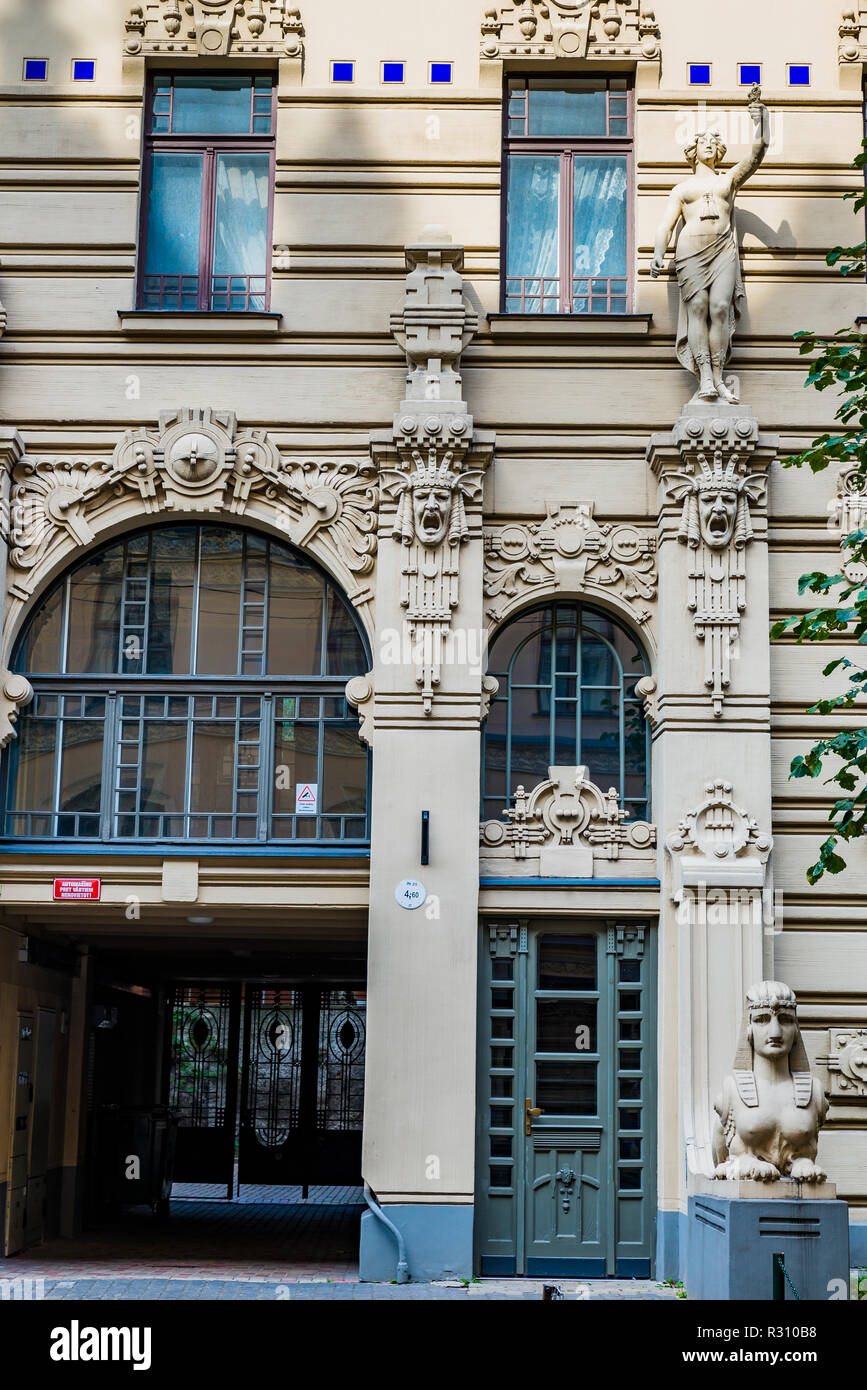
Art nouveau architecture in Riga Alberta iela 2a living house by Mikhail Eisenstein built in
Mikhail Osipovich Eisenstein ( Russian: Михаил Осипович Эйзенштейн, romanized : Michail Osipovič Ejzenštein, Latvian: Mihails Eizenšteins; 17 September [ O.S. 5] 1867 - 2 July 1920) was a civil engineer and architect working in Riga, the present-day capital of Latvia, when the city was part of the Russian Empire.
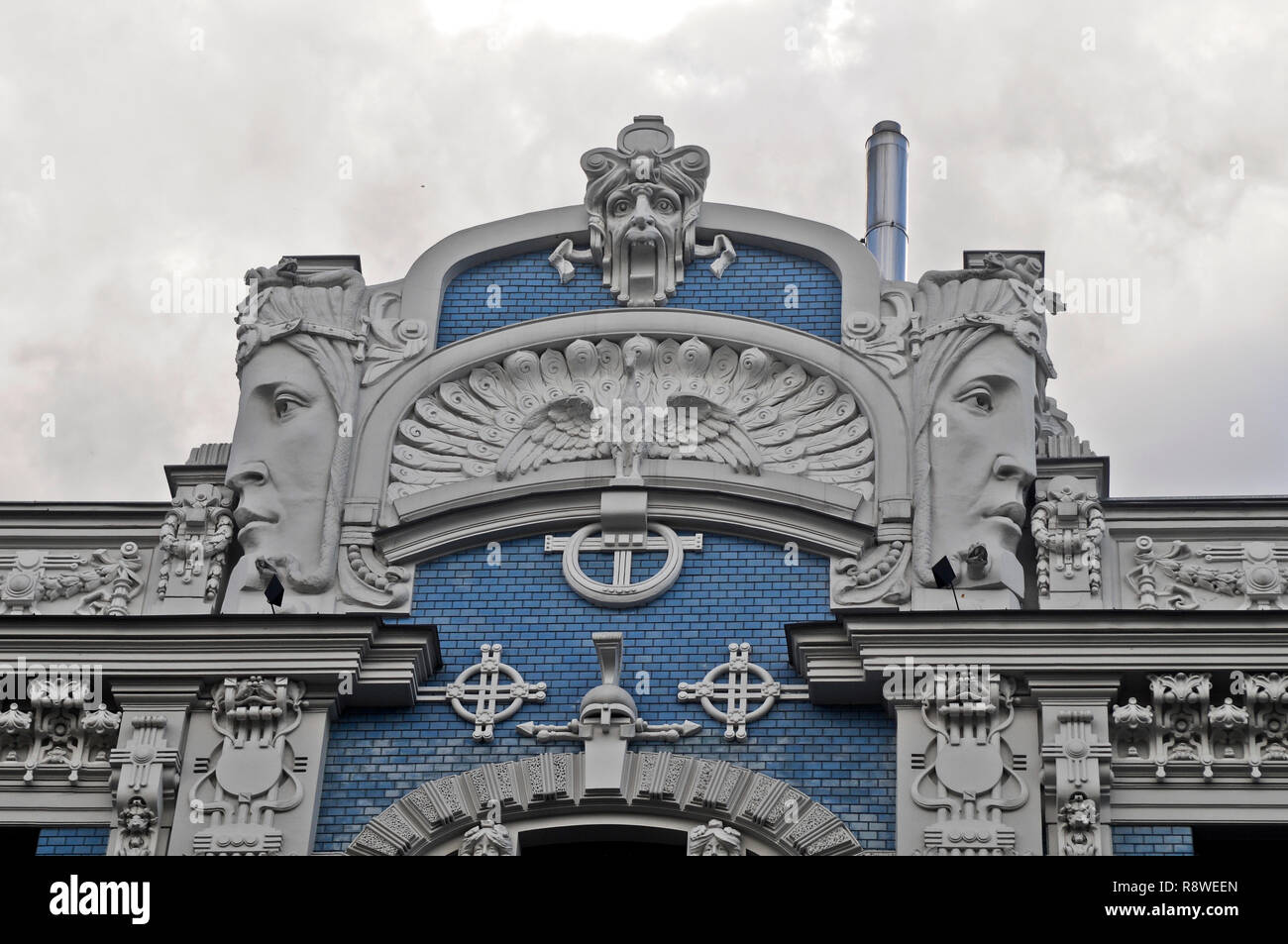
Mikhail Eisenstein Art Nouveau District, Riga, Latvia Stock Photo Alamy
The majority of the buildings were erected in the central part of the city, with a few being built in the Old Town of Riga. Mikhail Eisenstein, father of Sergei Eisenstein, a pivotal figure in world cinema, and Konstantīns Peksens are the two most notable Riga architects, responsible for almost half of the Art Nouveau buildings in the city..

Riga Art nouveau by Mikhail Eisenstein a photo on Flickriver
Architects working during this period in Riga included ethnic Latvians (among the most well represented being Eižens Laube, Konstantīns Pēkšēns and Jānis Alksnis), as well as architects from a Jewish background (Mikhail Eisenstein, Paul Mandelstamm) and Baltic Germans (such as Bernhard Bielenstein, Rudolph Dohnberg and Artur Moedlinger).
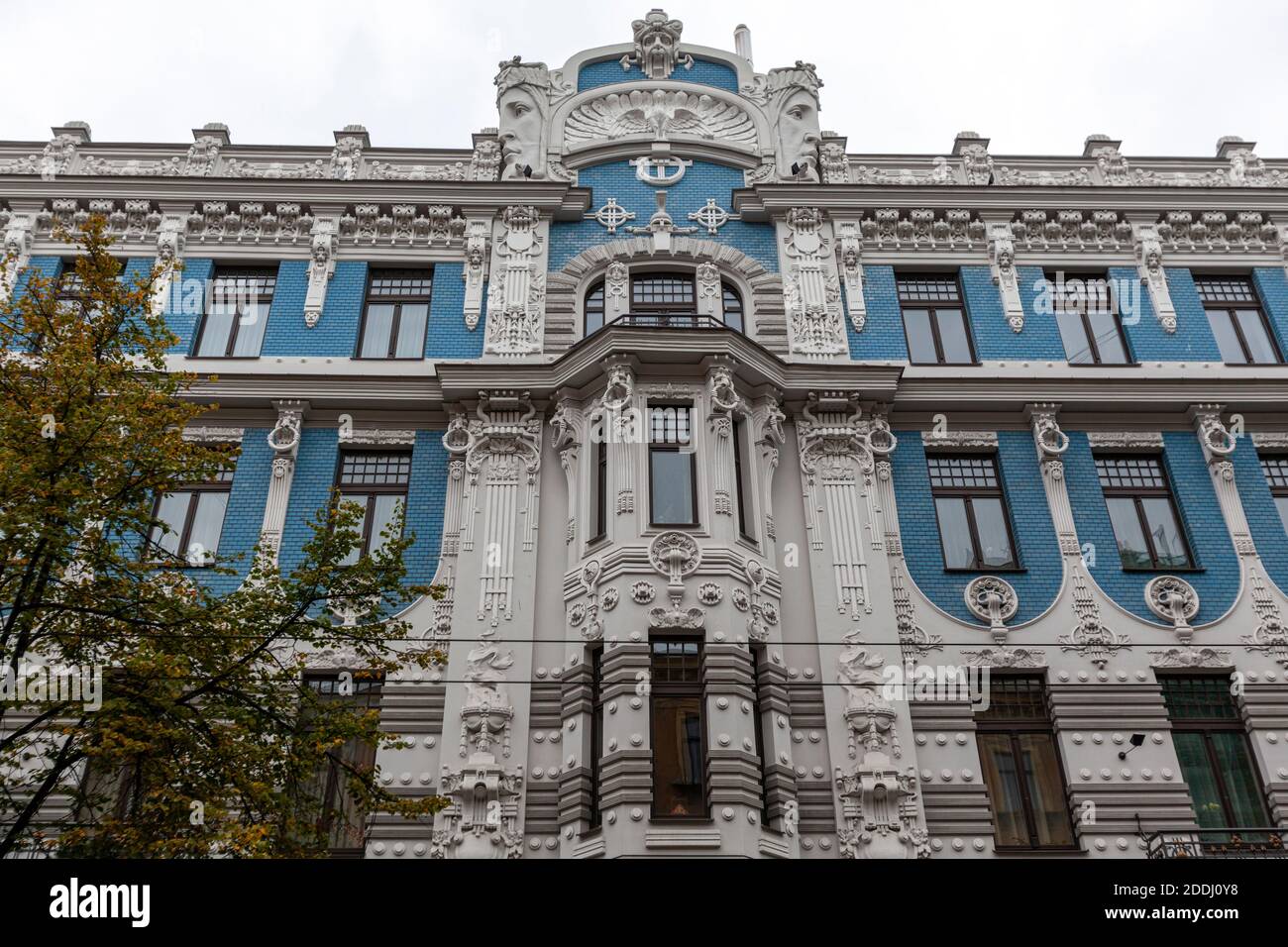
Elizabetes iela 10b building, by Mikhail Eisenstein, Riga, Art Nouveau architecture, Latvia
One of the most impressive examples of early Art Nouveau can be seen at 10b Elizabetes Street - a building designed by Mikhail Eisenstein, the father of cinema genius Sergei Eisenstein. It was built in 1903. The building has an extraordinarily colourful facade.
IrfanView HTMLThumbnails
Art Nouveau on Riga's Elizabetes iela. One of the city's most prolific art nouveau architects was Mikhail Eisenstein (1867 - 1921), father of the legendary Russian filmmaker Sergei Eisenstein who gave the world such cinematic treasures as Battleship Potemkin and Ivan the Terrible. He is best known for his collection of buildings on Alberta.
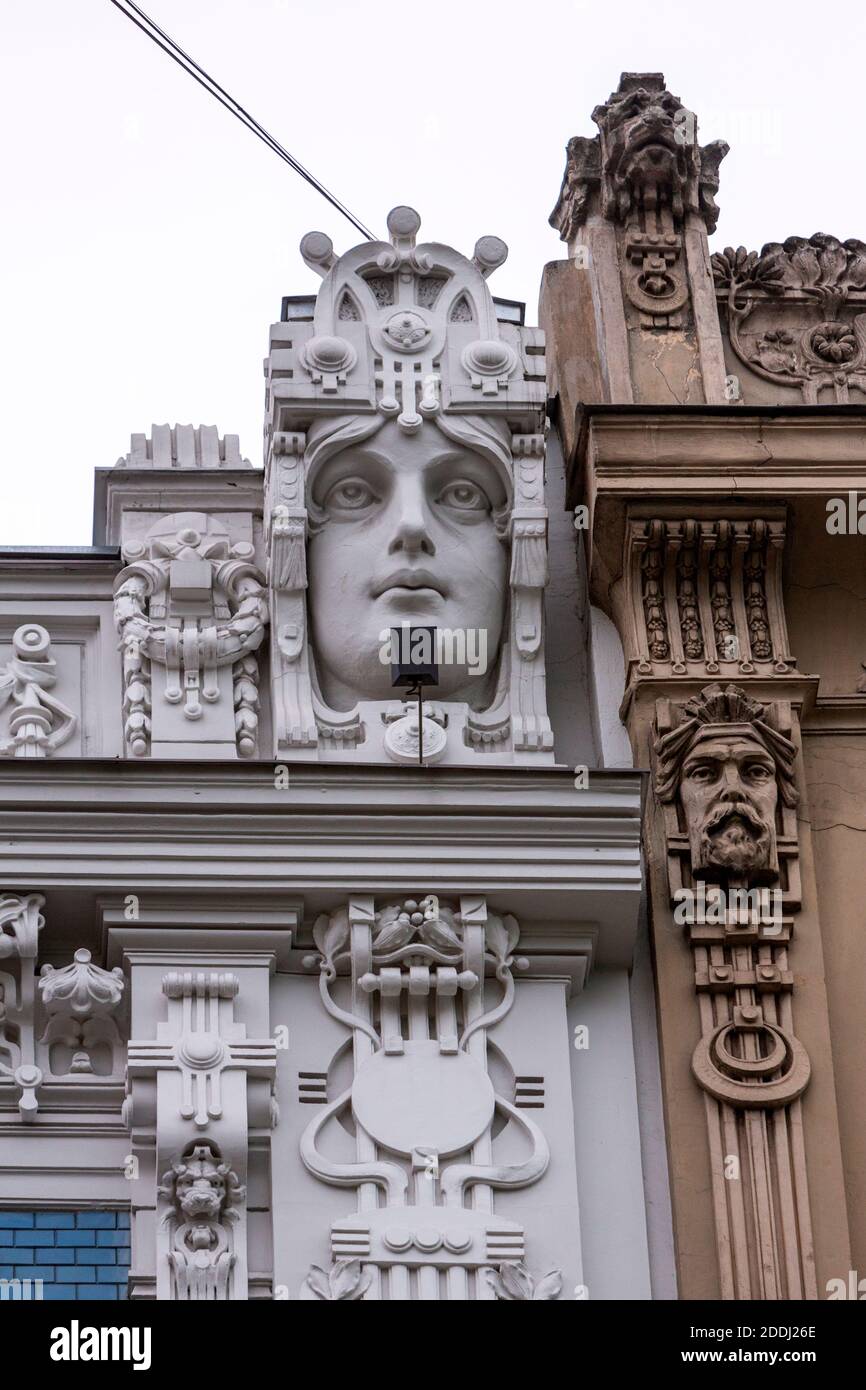
Elizabetes iela 10b building, by Mikhail Eisenstein, Riga, Art Nouveau architecture, Latvia
Mikhail Eisenstein used the elevation drawing developed and published by Leipzig architect Georg Wünschmann and artist Hans Kozel. The façade of the two upper floors make a wonderful background for stucco decorations and sculptures.
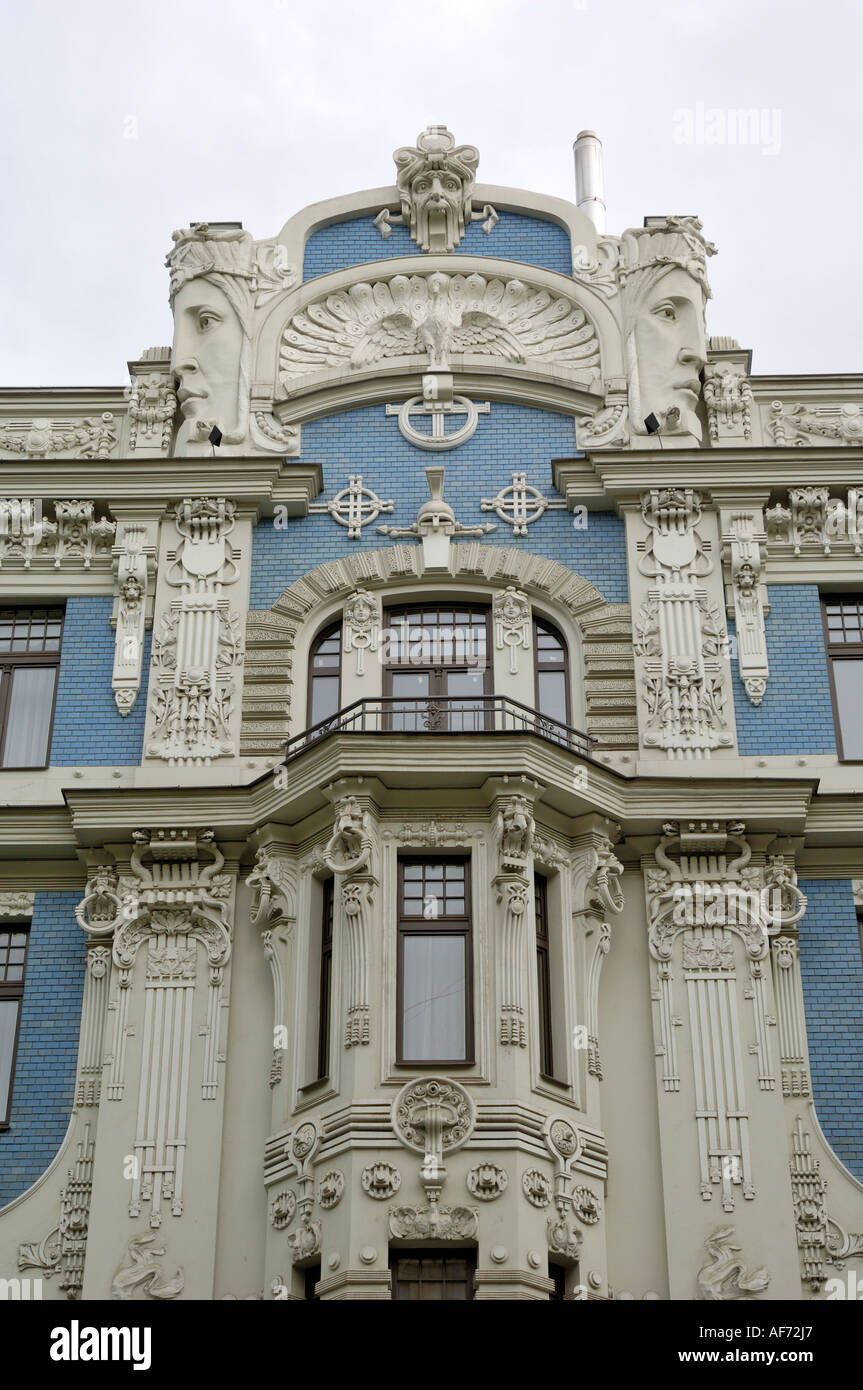
Art Nouveau architecture, 10b Elizabetes iela, designed by Mikhail Eisenstein, Riga, Latvia
On 10 June 2018, the RANN will celebrate the sixth World Art Nouveau Day !This year the topic is "My favorite Art Nouveau architect !"On this occasion, the R.

Riga, Eclectic Art Nouveau A building on Alberta iela by Mikhail Eisenstein, Art Nouveau
THE PALACES BY MIKHAÏL EISENSTEIN IN RIGA the most shining examples of the Russian Jugendstil photographs and text by Massimo Pacifico In the early 1900s Riga, the current capital of Latvia, experienced a period of great splendor.

Art nouveau architecture, 10b Elizabetes iela, designed by Mikhail Eisenstein, Riga, UNESCO
One of the best examples of Eclectically Decorative Art Nouveau created by Mikhail Eisenstein. As it is not crammed with decorative elements, the façade appears elegant and balanced.. The Anti-Bureaucracy Centre of the Riga City Council (phone: 67026859, 67012031, e-mail: [email protected]) performs functions of a contact point in the.
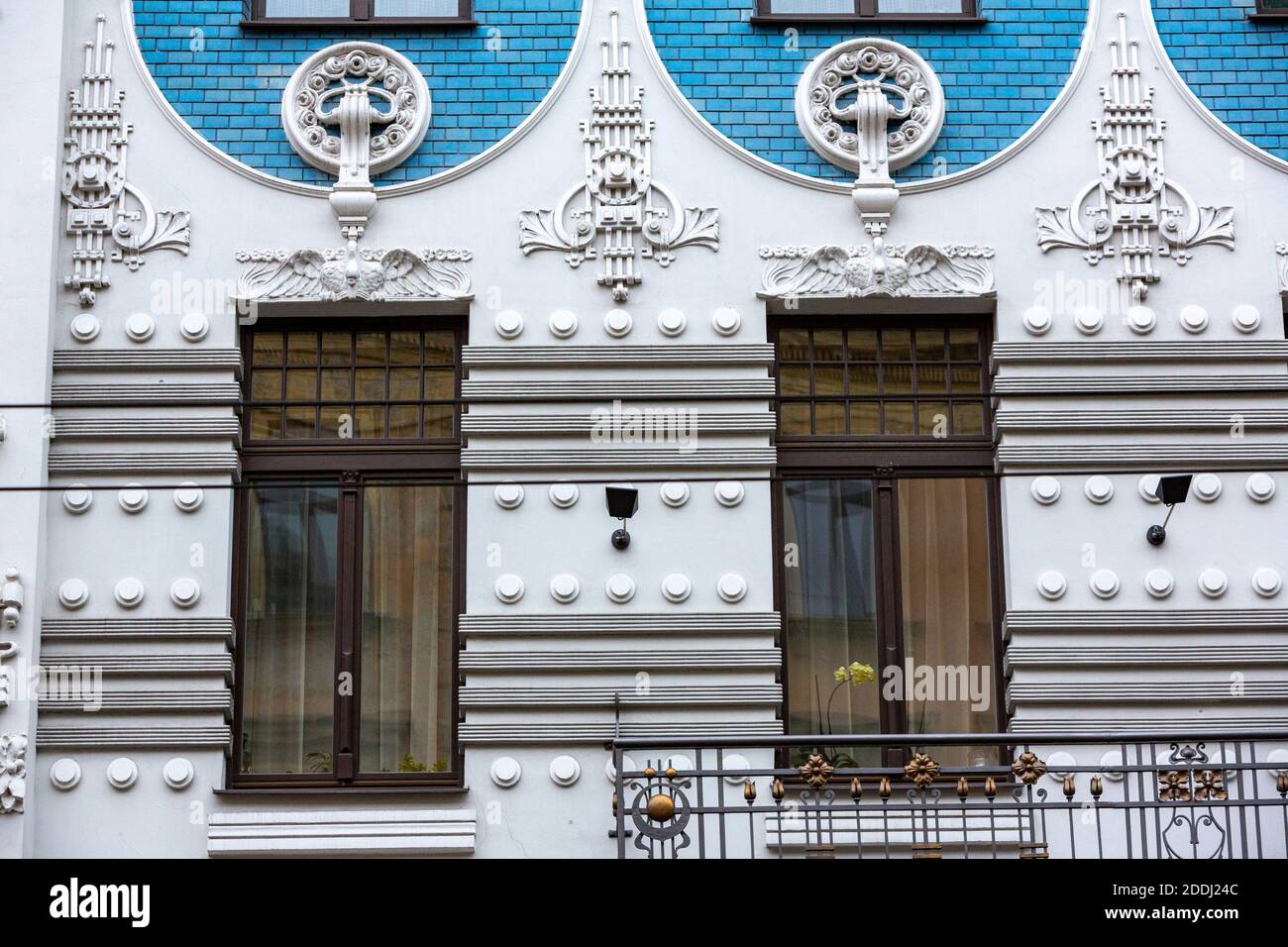
Elizabetes iela 10b building, by Mikhail Eisenstein, Riga, Art Nouveau architecture, Latvia
Riga is famous for its Art Nouveau buildings. And the finest example is the one at Alberta iela 13. The late 19th and early 20th century Art Nouveau style brought together all the visual arts.. a residential building designed by Mikhail Eisenstein (father of the film director Sergei) and built in 1904 for a state councillor by the name of.
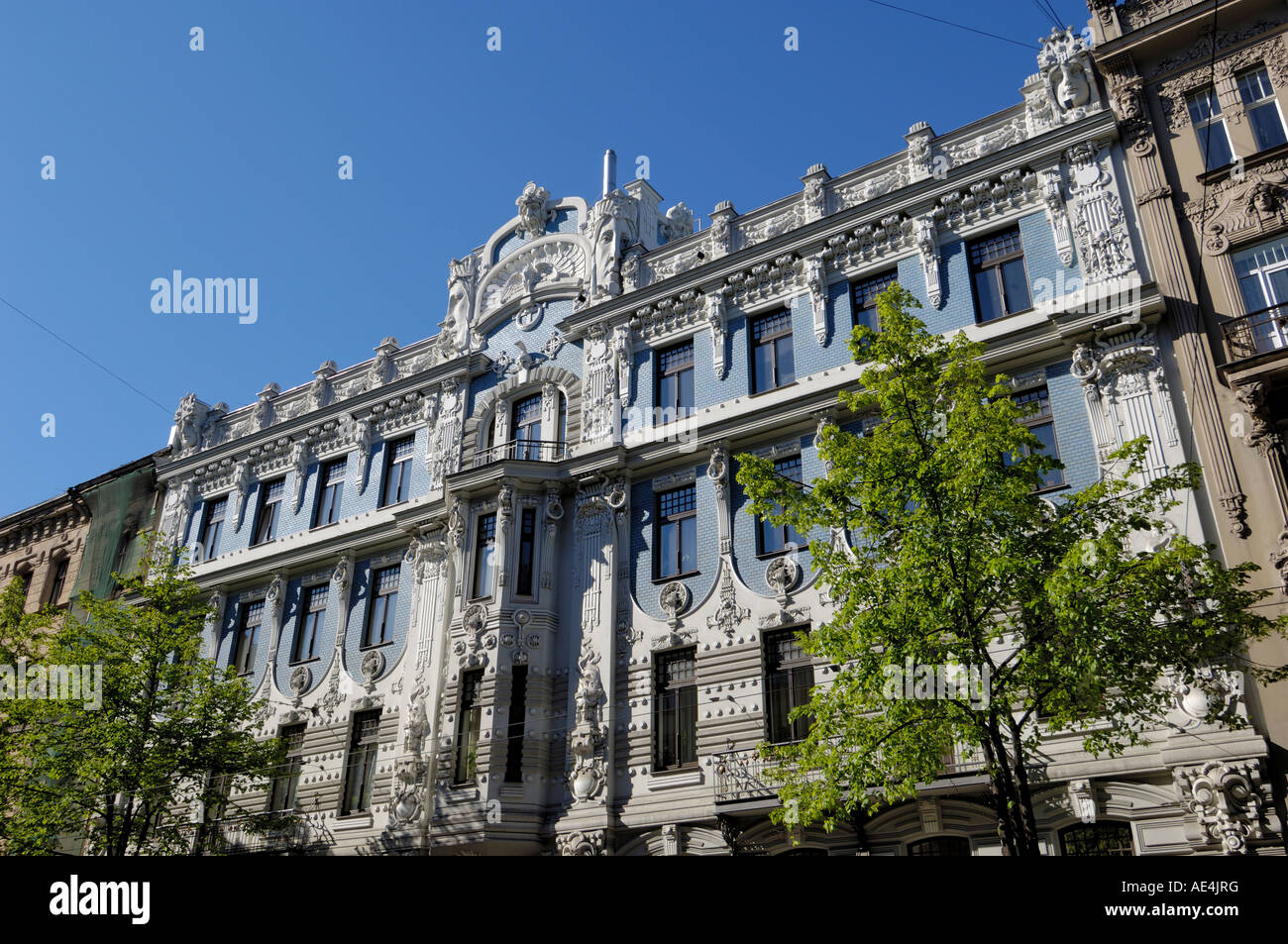
Art nouveau architecture, 10b Elizabetes iela, designed by Mikhail Eisenstein, Riga, UNESCO
One architect, Mikhail Eisenstein, emerged as the driving force behind Riga's Art Nouveau movement and designed a great number of buildings which are absolute gems. Some of his magnificent creations can be seen along the Elizabetes and Alberta Streets, and the Strēlnieku Street in the Embassy district.

Art Nouveau architecture, 10b Elizabetes iela, designed by Mikhail Eisenstein, Riga, Latvia
Alberta iela 2a (1906.) Apartment House of Vladimir Bogoslavsky. The last representative example of Eclectically Decorative Art Nouveau designed by Mikhail Eisenstein in Riga. The façade is dominated by the central avant-corps which is surmounted with an attic creating a marvellous effect. The sky and the clouds can be seen through the.

Riga, Lettonie Art Nouveau Building Designed by Mikhail Eisenstein Image éditorial Image du
Mikhail was a high society man, and evenings with the participation of noble people of Riga - artists and deputies of the Riga City Council - were often held in his apartment. Such events helped Eisenstein stay close to many high-ranked people in Riga, which contributed to the growth of his career.
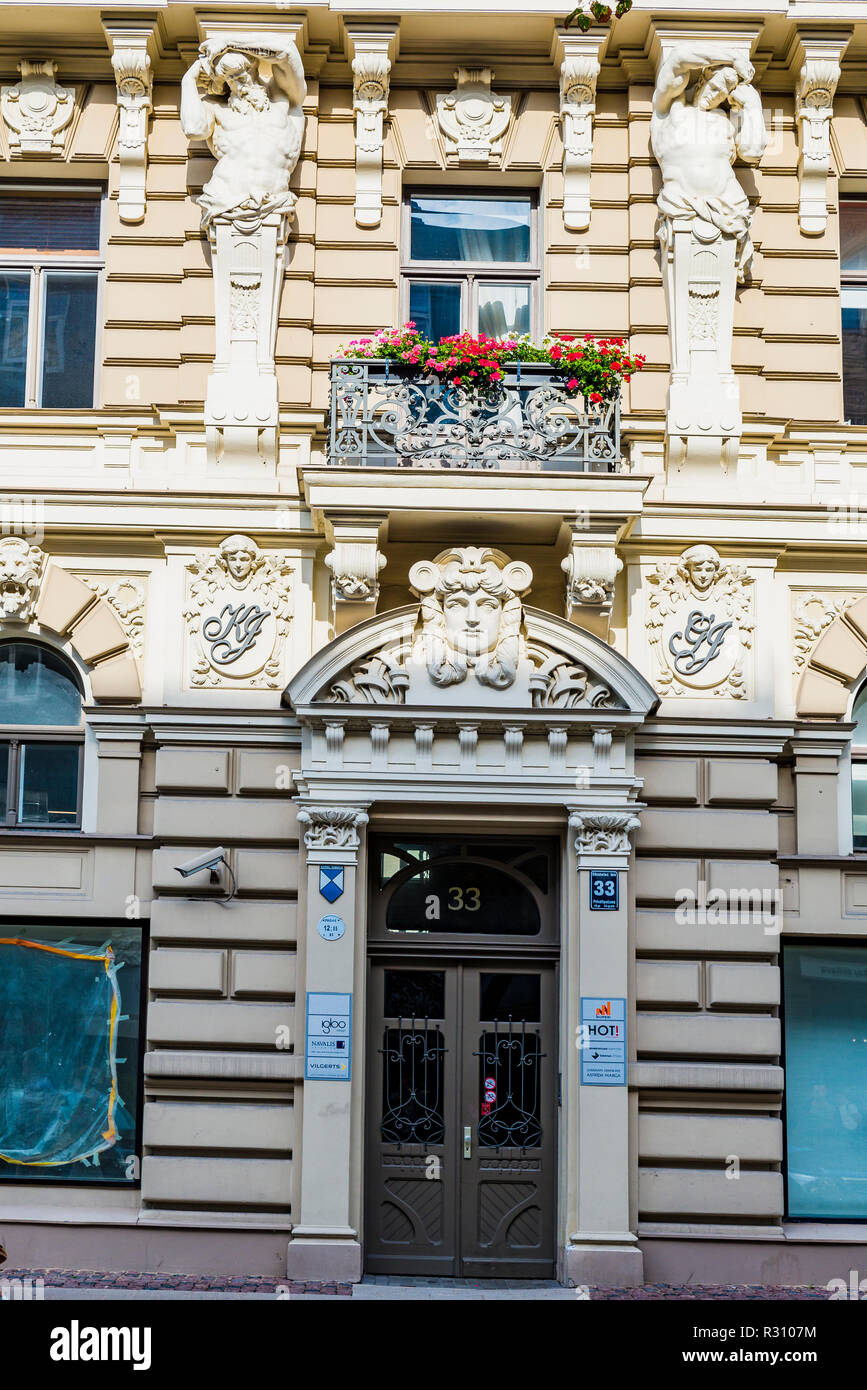
Art nouveau architecture in Riga Elizabetes iela 33 living house by Mikhail Eisenstein built
This is one of the most dramatic and dazzling buildings in the district. It dates from 1905 and is one of many by perhaps the best known architect of Riga's Art Nouveau period, Mikhail Eisenstein (father of the famous film director Sergei Eisenstein). Eisenstein's main concept was that even the smallest thing could be beautiful.

Art nouveau architecture in Riga Elizabetes iela 33 living house by Mikhail Eisenstein built
Mikhail Eisenstein was born on 5 September 1867, in Ukraine, to a family of Jewish merchants. He graduated from the Saint Petersburg Institute of Civil Engineering. His son is the famous film director Sergey Eisenstein. Mikhail Eisenstein built around 20 multi-storey masonry apartment houses in Riga and he is famous for his Art Nouveau buildings.
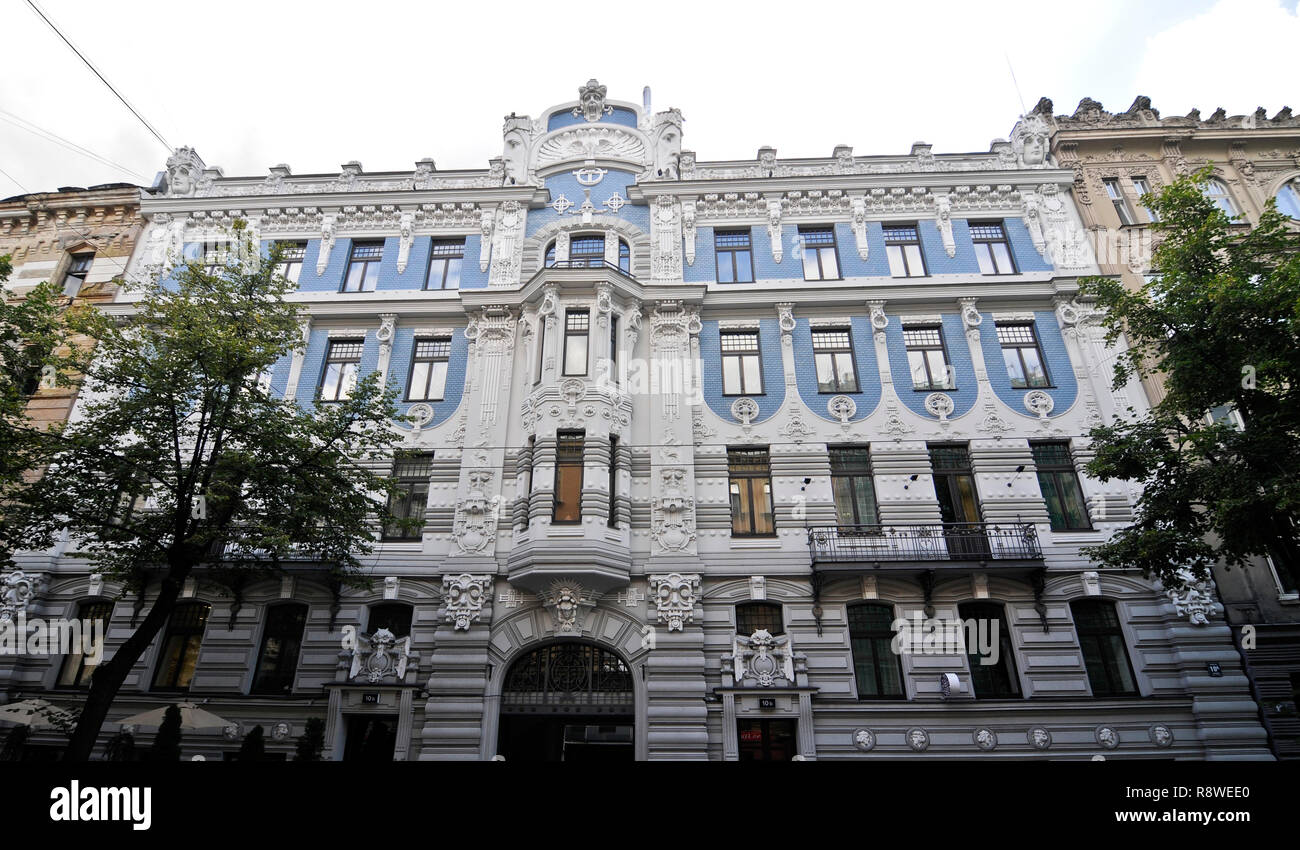
Mikhail Eisenstein Art Nouveau District, Riga, Latvia Stock Photo Alamy
Begin the quest for Riga's art nouveau on Elizabetes iel? 10b. Built in 1903 by Mikhail Eisenstein, the hues of blue ceramic tiling contrasted with white plasterwork serves as a canvas for the structure's decorated rich ornamentation.